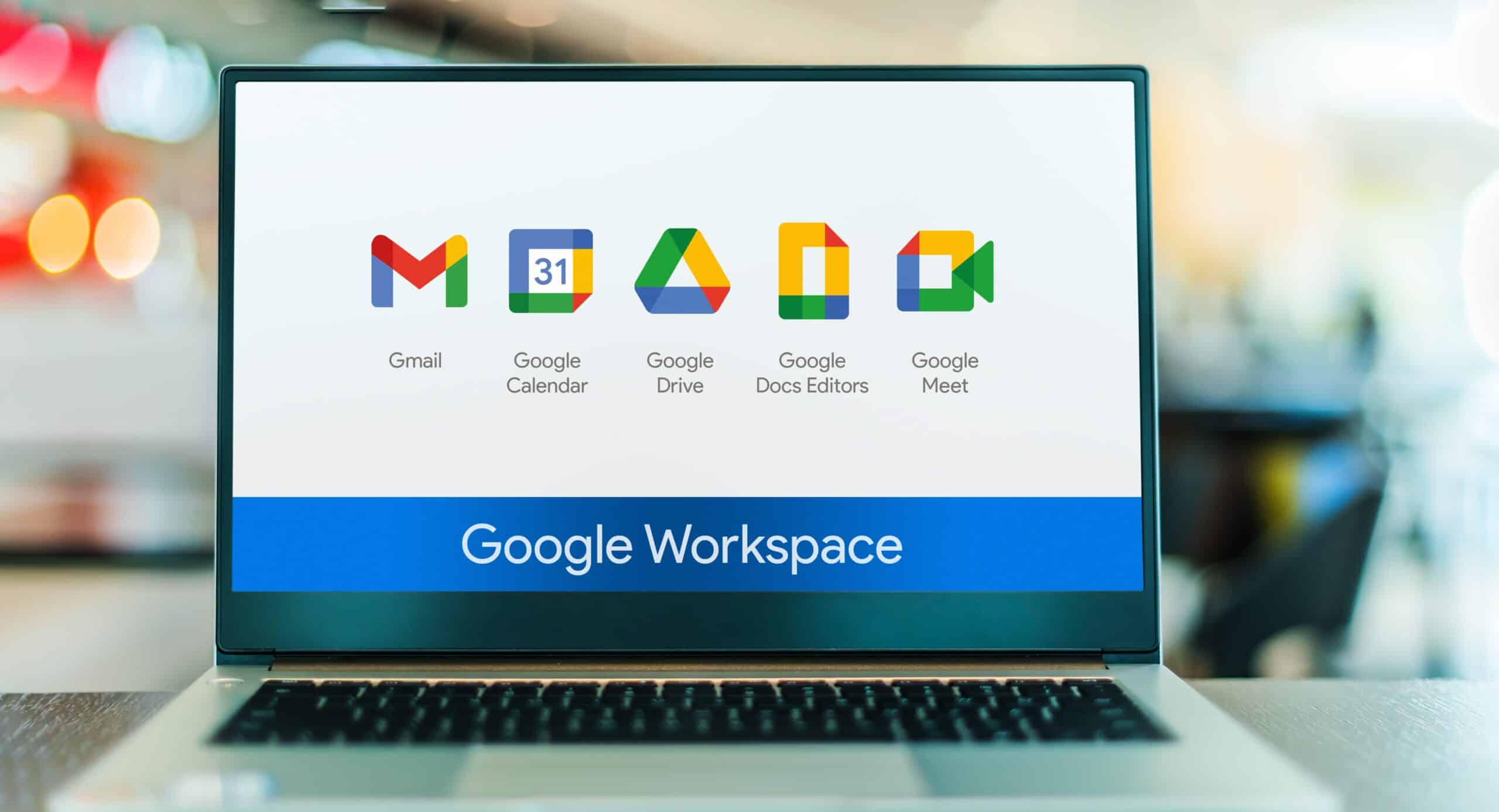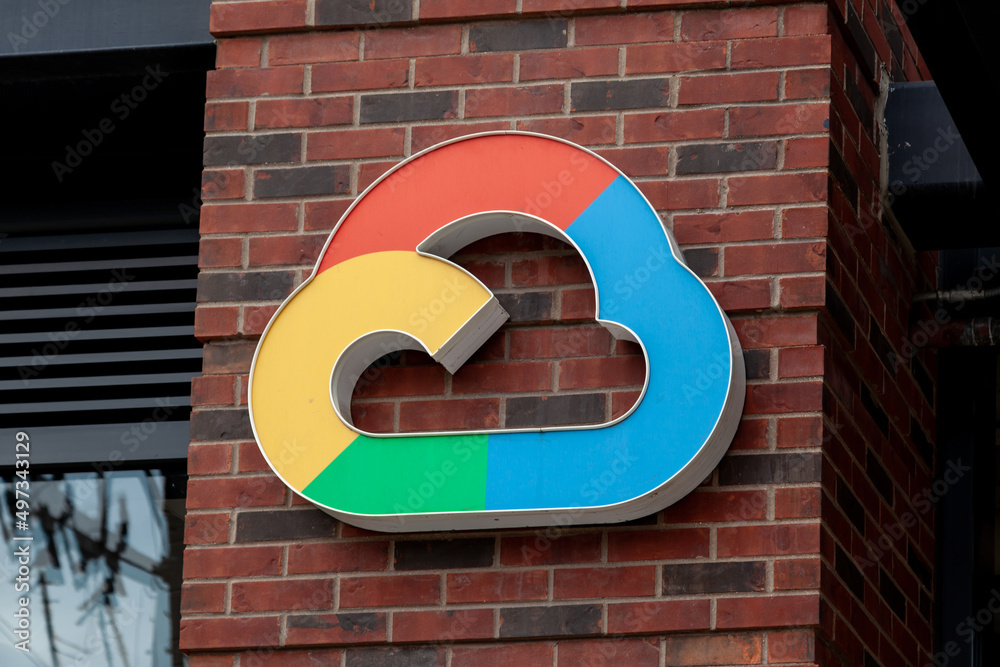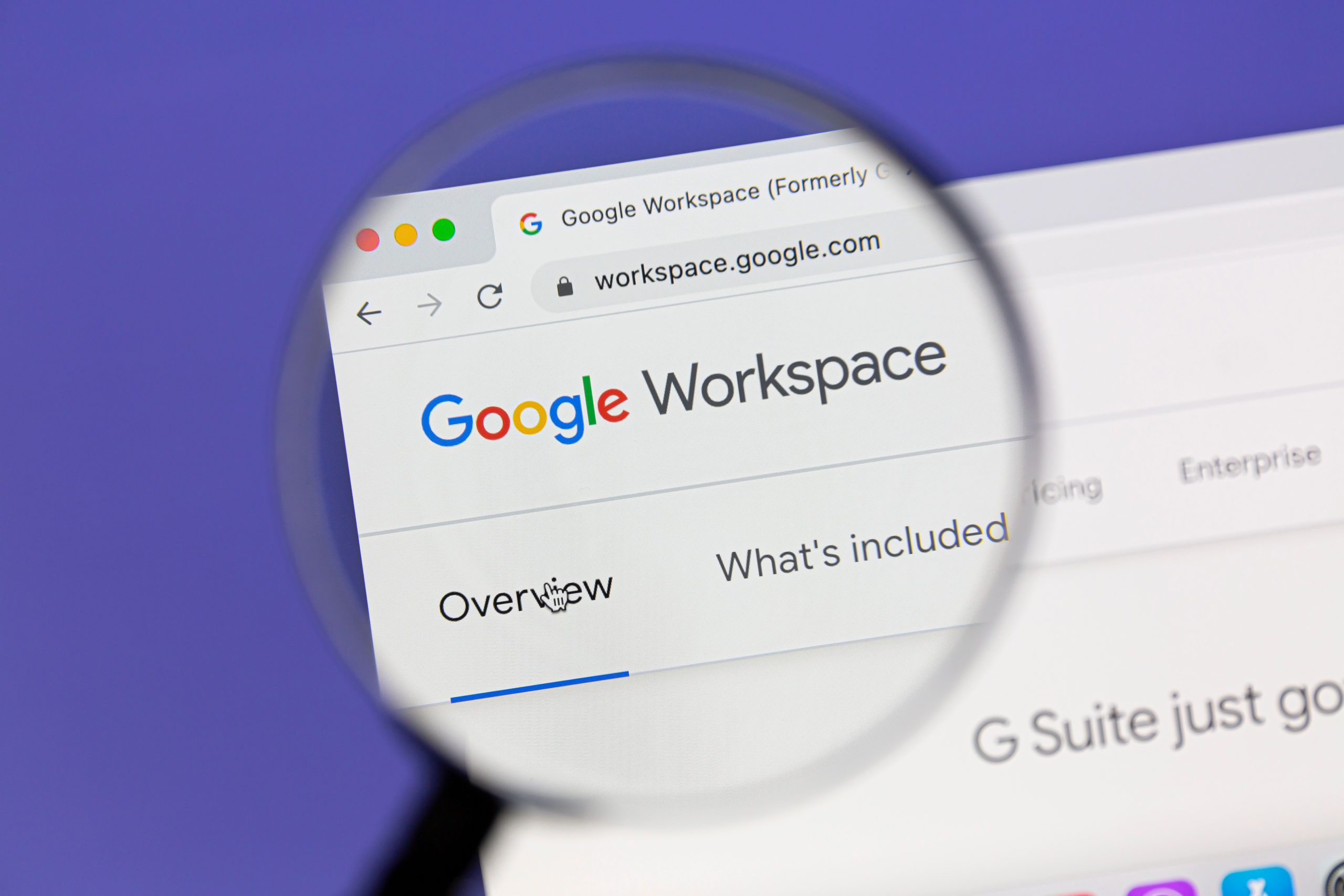Simplify Workflows with Google Suite: A Comprehensive Overview

Introduction
In the dynamic landscape of modern workplaces, the quest for enhanced productivity has been relentless.
The advent of technology has heralded a new era of collaboration, revolutionizing how teams work together.
One such game-changing tool in this evolution is Google Suite. Born out of the necessity to streamline workflows, Google Suite has become the linchpin of productivity for organizations worldwide.
This suite of applications transcends traditional boundaries, offering a seamless and integrated platform for communication, document collaboration, and project management.
In this comprehensive overview, we embark on a journey to explore the myriad ways in which Google Suite transforms the modern workplace, enabling teams to simplify their workflows and achieve unprecedented levels of efficiency.
The Evolution of Workplace Productivity
The evolution of workplace productivity has undergone a profound transformation over the years.
From the era of pen-and-paper to the advent of desktop computers, the trajectory has been one of perpetual advancement.
However, it was the shift towards cloud-based solutions that marked a turning point.
This transition facilitated real-time collaboration, enabling team members to work on documents simultaneously, regardless of geographical barriers. With the introduction of Google Suite, productivity reached new heights.
No longer confined to individual silos, teams could now collaborate seamlessly, revolutionizing the way tasks were managed, documents were created, and projects were executed.
Google Suite emerged as a harbinger of this evolution, propelling workplaces toward a future where productivity knows no bounds.
Introducing Google Suite as a Game-Changer
Google Suite isn’t just a collection of applications; it’s a transformative force that has redefined how teams operate.
At its core, Google Suite encapsulates a suite of applications designed to cater to the diverse needs of businesses, irrespective of their size or nature.
The suite seamlessly integrates essential tools like Gmail, Google Docs, Sheets, Slides, and more, providing a unified platform for communication, document creation, and project management. The distinguishing factor lies in its cloud-based infrastructure, which facilitates real-time collaboration, eliminating the constraints of traditional software.
With Google Suite, multiple team members can work on a single document, spreadsheet, or presentation simultaneously, witnessing updates in real-time.
This level of synchronization fosters a sense of unity and efficiency among team members, ultimately driving productivity to new heights.
By introducing Google Suite into the workplace, businesses embrace a transformative approach to collaboration, poised to revolutionize their operations and achieve unprecedented levels of productivity.
Part 1: Communication Efficiency
Gmail: More Than Email
At the forefront of communication efficiency within Google Suite stands Gmail, a powerhouse that transcends conventional email platforms.
It serves as a hub for streamlined and effective communication within teams and across organizations. Beyond basic email functions, Gmail boasts a range of advanced features that significantly enhance email management.
These include priority inbox, categorization, and powerful search capabilities, ensuring that important messages are always prioritized and easily accessible.
Moreover, Gmail’s intuitive interface and seamless integration with other Google Suite apps make it a cornerstone of efficient communication in the modern workplace.
Streamlining Communication with Gmail
Efficiency is the cornerstone of Gmail’s design.
The platform offers a host of features designed to expedite the communication process. Categorization and labeling functionalities ensure that emails are neatly sorted, allowing users to focus on the most pressing matters.
Additionally, the Priority Inbox feature intelligently identifies and separates important messages, ensuring that critical information is never buried in a sea of emails.
The power of Gmail lies not only in its ability to receive and send messages but also in its capacity to facilitate quick and effective communication, all while maintaining an organized and clutter-free inbox.
Advanced Features for Efficient Email Management
Gmail’s advanced features extend beyond the basics, catering to the nuanced needs of professionals.
The robust search capabilities, for instance, enable users to swiftly locate specific emails or threads, even amidst a vast archive.
Labels provide an additional layer of organization, allowing users to categorize emails based on project, priority, or any other customizable criteria.
Moreover, filters and automated responses can be set up, ensuring that routine tasks are streamlined and time-efficient.
These advanced features collectively contribute to a refined and efficient email management system, empowering users to stay organized and responsive in a fast-paced work environment.
Google Chat: Real-Time Collaboration
In the realm of modern workplace communication, real-time collaboration is paramount.
Recognizing this need, Google Suite introduced Google Chat, an intuitive platform for instant messaging and team collaboration.
Google Chat is designed to facilitate swift and efficient communication, reducing the need for lengthy email exchanges.
Whether it’s a quick question or a project update, Google Chat provides an intuitive interface for instant messaging. What sets Google Chat apart is its integration with other Google Suite apps, allowing for a smooth transition from chat to collaborative work in platforms like Google Docs and Sheets.
This integration ensures that conversations seamlessly translate into actionable tasks, solidifying its role in enhancing team efficiency.
Enhancing Team Communication with Google Chat
Google Chat brings a new dimension to team communication, providing an interface that is both intuitive and dynamic.
Conversations are organized in threads, allowing for clear and focused discussions on specific topics or projects.
The real-time nature of the platform means that responses are immediate, fostering a sense of fluidity and efficiency in team interactions.
Additionally, Google Chat allows for the creation of rooms, which serve as dedicated spaces for specific teams or projects.
This segmentation ensures that conversations remain targeted and relevant, further enhancing the efficiency of team communication.
Integrating Chat with Other Google Suite Apps
What sets Google Chat apart is its seamless integration with other Google Suite applications.
This integration is a game-changer for productivity, as it allows for a fluid transition from conversation to action.
For example, a brainstorming session in Google Chat can seamlessly transition to collaborative document editing in Google Docs. Links, documents, and files can be shared directly within the chat interface, eliminating the need for cumbersome email attachments.
This integration ensures that conversations are not isolated but are part of a larger collaborative ecosystem, where ideas and discussions readily translate into actionable tasks and projects.
Part 2: Seamless Document Collaboration
Google Docs: Beyond Word Processing
Google Docs revolutionizes the concept of document collaboration, offering more than just a word processing platform. It serves as a dynamic space for teams to create, edit, and collaborate on documents in real time.
One of its standout features is version control, allowing users to track changes and revert to previous versions if needed.
This ensures that collaborative efforts remain organized and cohesive, even when multiple team members are working on the same document simultaneously.
With real-time editing features and robust collaborative tools, Google Docs sets a new standard for document creation and teamwork.
Collaborative Document Creation with Google Docs
The strength of Google Docs lies in its ability to facilitate real-time collaboration among team members. Multiple users can work on the same document simultaneously, witnessing updates in real-time.
This collaborative environment eliminates the need for back-and-forth exchanges of document versions, streamlining the editing process.
Comments and suggestions provide a platform for constructive feedback and discussion, ensuring that the final document reflects the collective expertise of the team.
With the ability to work on documents from any device with internet access, Google Docs empowers teams to create impactful and cohesive documents, regardless of their physical location.
Version Control and Real-Time Editing Features
Version control in Google Docs is a game-changer for document collaboration.
It allows users to view the edit history, track changes, and even revert to previous versions if necessary.
This feature ensures that the document’s integrity is maintained, even in the face of extensive collaborative efforts.
Real-time editing features further enhance the collaborative experience.
Users can see changes being made by their team members instantaneously, fostering a sense of unity and progress.
The seamless integration of comments and suggestions provides a platform for constructive feedback, ultimately leading to a polished and refined final product.
Google Sheets: Empowering Data Management
For tasks that demand data-driven precision, Google Sheets rises to the occasion as a powerful collaborative spreadsheet tool.
Teams can engage in collaborative data analysis and reporting, leveraging the platform’s extensive range of functions, formulas, and data visualization tools.
This empowers users to perform complex calculations, generate insightful reports, and create visually compelling charts and graphs.
What sets Google Sheets apart is its ability to facilitate simultaneous collaboration, ensuring that teams can work together on data-intensive projects with ease.
By combining the power of collaborative analysis with intuitive data management, Google Sheets revolutionizes how teams handle and leverage data.
Collaborative Data Analysis with Google Sheets
Google Sheets provides a dynamic platform for collaborative data analysis, enabling teams to work together on complex projects that require meticulous attention to detail.
Its extensive library of functions and formulas caters to a wide range of analytical needs, allowing for the manipulation and interpretation of data with precision.
Additionally, data visualization tools within Google Sheets empower users to create visually compelling charts and graphs, transforming raw data into actionable insights.
The real-time collaboration feature ensures that multiple team members can contribute to data analysis simultaneously, maximizing efficiency and accuracy in decision-making.
Functions, Formulas, and Data Visualization Tools
Google Sheets’ rich set of functions and formulas empowers users to perform complex calculations, automate processes, and derive meaningful insights from data.
Whether it’s statistical analysis, financial modeling, or complex computations, Google Sheets provides the necessary tools to handle diverse analytical tasks.
Moreover, the platform offers a wide array of data visualization options, including charts, graphs, and pivot tables.
These tools transform raw data into visually engaging representations, making it easier for teams to interpret and communicate their findings.
With functions, formulas, and data visualization tools at their disposal, teams can harness the full potential of their data within Google Sheets.
Part 3: Dynamic Presentations
Google Slides: Engaging Audiences
In the realm of impactful presentations, Google Slides stands as a powerful tool for engaging audiences.
It offers a user-friendly platform for crafting dynamic and visually compelling presentations.
The intuitive interface provides a range of templates and design options, ensuring that each slide is tailored to convey information effectively.
Beyond aesthetics, Google Slides incorporates collaboration features that allow multiple team members to work on a presentation simultaneously.
This real-time collaboration ensures that group presentations are seamless, cohesive, and reflective of collective expertise, ultimately leaving a lasting impression on the audience.
Crafting Dynamic Presentations with Google Slides
Google Slides empowers users to create presentations that captivate and inform.
Its user-friendly interface offers a range of design tools and templates, making it accessible to users of all levels of expertise.
Whether it’s a sales pitch, a project update, or a conference presentation, Google Slides provides the canvas for dynamic content delivery.
The platform’s rich multimedia capabilities allow for the integration of images, videos, and charts, enhancing the visual appeal of the presentation.
With real-time collaboration, multiple team members can contribute to the presentation, ensuring that the final product is a collective effort that reflects the expertise and creativity of the team.
Collaboration Features for Group Presentations
Google Slides takes presentations to the next level with its robust collaboration features.
Multiple team members can work on a presentation simultaneously, allowing for a seamless integration of ideas and content.
Comments and suggestions provide a platform for constructive feedback and discussion, ensuring that the presentation is refined and polished.
The ability to view the edit history and track changes ensures that the integrity of the presentation is maintained, even amidst extensive collaborative efforts.
This collaborative environment sets the stage for presentations that are not only informative but also engaging, leaving a lasting impression on the audience.
Google Drawings: Visualizing Ideas
In the realm of visual communication, Google Drawings offers a versatile platform for bringing ideas to life.
It provides a canvas for designing diagrams, flowcharts, and various forms of visual content.
The intuitive drag-and-drop interface makes it accessible to users of all levels of expertise, allowing for the easy creation of visually appealing representations of ideas and concepts.
Whether it’s illustrating processes, creating organizational charts, or designing informative graphics, Google Drawings provides the tools for clear and effective communication.
Designing Visual Content with Google Drawings
Google Drawings empowers users to create visually compelling content that enhances communication and understanding.
Its intuitive interface allows for the creation of diagrams, flowcharts, and other visual elements with ease.
The platform offers a variety of shapes, lines, and editing tools, providing users with the flexibility to design graphics that convey their ideas effectively.
Moreover, the integration of Google Drawings with other Google Suite apps allows for seamless incorporation of visuals into documents, presentations, and more. This ensures that visual content is an integral part of the overall communication strategy, enhancing the clarity and impact of the message.
Integrating Drawings for Enhanced Communication
The integration of Google Drawings into the broader Google Suite ecosystem enhances communication in a variety of contexts.
Visuals created in Google Drawings can be seamlessly incorporated into documents, presentations, and even emails, adding a dynamic element to communication.
Whether it’s illustrating a concept in a report or creating an informative diagram in a presentation, Google Drawings provides the tools to enhance the clarity and impact of the message.
This integration ensures that visual content is not isolated but is an integral part of the overall communication strategy, ultimately elevating the effectiveness of the message conveyed.
Part 4: Organized File Management
Google Drive: Cloud-Powered Organization
Google Drive emerges as the cornerstone of organized file management, offering a cloud-powered platform that revolutionizes the way teams store, access, and collaborate on files.
The cloud-based infrastructure ensures that files are accessible from any device with internet connectivity, eliminating the constraints of physical storage.
Moreover, Google Drive’s intuitive folder structure and search capabilities empower users to organize files efficiently.
With features like file versioning and advanced sharing options, Google Drive not only streamlines file management but also enhances collaboration by providing a unified platform for teams to work on documents, spreadsheets, and presentations in real time.
Efficient File Management and Storage with Google Drive
Google Drive provides an efficient and secure environment for file management and storage.
Its cloud-based nature means that files are stored remotely, reducing reliance on physical hardware and enabling seamless access from any device with internet connectivity.
The intuitive folder structure allows for easy organization, ensuring that files are stored in a logical and easily retrievable manner.
Additionally, Google Drive’s search capabilities enable users to locate specific files swiftly, even amidst a vast repository.
With features like file versioning, users can track changes and revert to previous versions if needed, ensuring the integrity of collaborative efforts. Google Drive sets the standard for efficient file management in the digital age.
Sharing and Collaborating on Files and Folders
One of the standout features of Google Drive is its robust sharing and collaboration capabilities.
Users can share files and folders with specific team members or make them accessible to anyone with a link.
Additionally, users can assign different levels of permissions, allowing for view-only access or enabling editing rights.
This flexibility ensures that information is shared securely and collaboratively. Multiple team members can work on the same document, spreadsheet, or presentation simultaneously, witnessing updates in real-time.
This collaborative environment ensures that projects progress seamlessly, ultimately leading to more efficient and productive workflows.
Google Calendar: Scheduling Made Simple
In the realm of efficient time management, Google Calendar takes center stage.
It provides a user-friendly platform for scheduling and organizing events, whether they are meetings, appointments, or deadlines.
The intuitive interface allows users to create events, set reminders, and invite attendees with ease.
Additionally, Google Calendar offers the flexibility to view schedules by day, week, or month, providing a comprehensive overview of upcoming events.
The integration with Gmail and other productivity apps ensures that users are notified of events and can easily transition from scheduling to execution, streamlining the entire workflow.
Streamlining Event Planning with Google Calendar
Google Calendar serves as a powerful tool for streamlining event planning.
Users can create events, set specific dates and times, and even allocate resources or meeting rooms if needed. The platform offers the ability to invite attendees, ensuring that everyone involved is aware of the event details.
Additionally, Google Calendar provides options for setting reminders, reducing the likelihood of overlooking important events.
Whether it’s a team meeting, a client presentation, or a project deadline, Google Calendar ensures that events are organized and communicated effectively, ultimately contributing to more efficient workflows.
Integration with Gmail and Other Productivity Apps
What sets Google Calendar apart is its seamless integration with other Google Suite applications.
Events and reminders can be directly linked to Gmail, ensuring that users are notified of upcoming events.
Moreover, events can be linked to Google Drive, providing easy access to relevant documents or files associated with the event.
This integration ensures that scheduling isn’t isolated but is part of a larger ecosystem of productivity tools.
Whether it’s transitioning from scheduling to email communication or accessing relevant documents for an event, Google Calendar streamlines the entire workflow, ultimately contributing to more efficient and productive workdays.
Part 5: Collaborative Workspaces
Google Sites: Building Internal Knowledge Bases
Google Sites offers a platform for creating internal knowledge bases, serving as a repository of information for teams.
It provides a user-friendly interface for designing informative websites that house crucial resources, documents, and guidelines.
The intuitive drag-and-drop features make it accessible to users of all levels of expertise, allowing for the easy creation of customized knowledge bases.
With Google Sites, teams can centralize important information, ensuring that it is readily accessible to all members.
The platform’s customization and embedding features further enhance the functionality of these internal knowledge bases, making them dynamic and indispensable resources for the team.
Creating Informative Internal Websites with Google Sites
Google Sites empowers teams to create informative and accessible internal websites with ease.
Its user-friendly interface allows for the intuitive design and layout of pages, making it accessible to users of all levels of expertise.
The platform provides a range of customization options, allowing teams to tailor the website to their specific needs. Whether it’s housing important documents, providing access to training materials, or sharing best practices, Google Sites ensures that information is organized and readily available.
Moreover, the platform’s embedding features enable the integration of various content types, enhancing the functionality of the internal website.
Customization and Embedding Features for Unique Workspaces
Google Sites stands out for its customization and embedding capabilities, allowing teams to create unique and tailored workspaces.
Users can choose from a variety of templates and design options, ensuring that the website aligns with the team’s brand and preferences.
Additionally, Google Sites supports the embedding of various content types, including documents, presentations, videos, and more.
This versatility enhances the functionality of the workspace, making it a dynamic hub of information and resources.
Whether it’s integrating training materials, displaying project updates, or housing important guidelines, Google Sites provides the tools to create workspaces that cater to the specific needs of the team.
Google Classroom: Virtual Learning Environments
Google Classroom transforms the landscape of education, providing a virtual learning environment that empowers educators and students alike.
It serves as a centralized platform for managing classes, assignments, and communication. Educators can create classes, distribute assignments, and provide feedback, all within the Google Classroom interface.
Students, on the other hand, have a streamlined platform for accessing resources, submitting assignments, and engaging in class discussions.
This virtual classroom environment fosters a dynamic and interactive learning experience, enabling educators to facilitate effective education regardless of physical location.
Facilitating Education with Google Classroom
Google Classroom redefines the educational experience, offering a platform that facilitates seamless communication and collaboration between educators and students.
Educators can create classes and invite students, providing a centralized hub for course materials, assignments, and announcements.
The platform streamlines the assignment submission process, allowing students to submit work digitally.
Educators can then provide timely feedback, creating a continuous cycle of learning and improvement.
The class stream serves as a forum for discussions and announcements, fostering engagement and interaction among students.
With Google Classroom, education transcends physical boundaries, enabling effective learning in virtual environments.
Assignments, Grading, and Effective Communication for Educators
Google Classroom equips educators with a suite of tools to streamline the assignment and grading process.
Educators can create assignments, set due dates, and attach relevant resources.
Once students submit their work, educators can review and provide feedback directly within the platform.
The integrated grading system ensures that grades are organized and easily accessible.
Moreover, Google Classroom facilitates effective communication between educators and students.
Announcements and class discussions provide a platform for announcements, clarifications, and engaging conversations.
This seamless integration of assignments, grading, and communication ultimately enhances the educational experience for both educators and students.
Part 6: Security and Administration
Google Admin Console: Ensuring Data Integrity
Google Admin Console stands as a critical tool for ensuring data integrity within an organization.
It provides administrators with the ability to manage user accounts, configure security settings, and enforce policies.
The console serves as the central hub for overseeing the organization’s Google Suite environment, allowing administrators to have granular control over user access and permissions.
This ensures that sensitive information is safeguarded and that data integrity is maintained across the organization.
Managing User Accounts and Security Settings with Admin Console
Google Admin Console empowers administrators with the ability to manage user accounts and configure security settings.
It provides a centralized platform for creating and managing user profiles, ensuring that access is granted only to authorized individuals.
Additionally, administrators can set security policies, such as password requirements and two-factor authentication, to enhance data security.
The console also offers the ability to monitor login activity and security events, providing administrators with valuable insights into potential security threats.
With Google Admin Console, organizations have the tools to proactively protect their data and maintain the integrity of their Google Suite environment.
Monitoring Data Security Within the Organization
Google Admin Console offers robust monitoring capabilities to ensure data security within the organization.
Administrators can track user activity, including logins, file access, and application usage.
This visibility allows for the detection of any suspicious or unauthorized behavior, enabling swift action to address potential security threats.
Additionally, the console provides insights into security events and alerts, empowering administrators to stay informed about any potential risks to data integrity.
By actively monitoring data security, organizations can take proactive measures to protect their sensitive information.
Security Best Practices: Safeguarding Your Workspace
In an ever-evolving digital landscape, implementing security best practices is paramount.
Google Admin Console provides a range of tools and settings that enable organizations to enforce security measures.
This includes setting strong password policies, implementing two-factor authentication, and controlling access permissions.
Educating users on best practices for data security, such as recognizing phishing attempts and safeguarding login credentials, further strengthens the organization’s security posture.
By following these best practices, organizations can create a secure workspace that protects sensitive information and maintains data integrity.
Tips for Data Security and Threat Protection
Google Admin Console offers a range of features and settings to enhance data security and protect against potential threats.
Implementing two-factor authentication, encrypting sensitive information, and regularly reviewing access permissions are fundamental steps in safeguarding data integrity.
Educating users about phishing threats and providing guidelines for secure browsing habits further fortifies the organization’s security posture. Additionally, staying informed about the latest security updates and features offered by Google Suite allows organizations to adapt to emerging threats.
By adopting a proactive approach to data security, organizations can effectively mitigate risks and maintain the integrity of their workspace.
Implementing Two-Factor Authentication and Encryption
Two-factor authentication and encryption are integral components of a robust security strategy.
Google Admin Console enables organizations to enforce two-factor authentication, adding an additional layer of security to user accounts.
This authentication method requires users to provide a second form of verification, such as a mobile device, in addition to their password.
Additionally, Google Suite employs encryption protocols to protect data during transmission and while stored in the cloud.
This ensures that sensitive information remains confidential and secure. By implementing these measures, organizations can significantly reduce the risk of unauthorized access and data breaches.
Conclusion
In the dynamic landscape of modern workplaces, efficiency and collaboration are paramount.
The right tools can transform workflows, enhancing productivity and enabling teams to achieve their full potential.
Google Suite stands as a game-changer, offering a comprehensive suite of productivity and collaboration tools that empower teams to simplify their workflows and achieve remarkable results.
With Google Suite, communication becomes seamless and efficient.
Gmail provides more than just email; it’s a platform for effective correspondence, while Google Chat facilitates real-time collaboration, ensuring that teams are always in sync.
Document collaboration reaches new heights with Google Docs and Sheets.
These tools not only enable collaborative editing but also provide powerful features for data analysis and reporting, revolutionizing how teams work on projects and reports.
Dynamic presentations become a breeze with Google Slides and Drawings. Engaging audiences and visualizing ideas are made easy, thanks to the intuitive interfaces and powerful design capabilities.
Organized file management is achieved with Google Drive, a cloud-powered solution that allows for efficient storage and seamless access.
It transforms how teams organize and share files, making collaboration a breeze. Google Calendar simplifies event planning, ensuring that schedules are organized and accessible to all team members.
Collaborative workspaces take shape with Google Sites and Classroom.
These tools foster knowledge-sharing and facilitate learning environments, whether for internal teams or educational purposes.
Security and administration are paramount, and Google Admin Console provides the necessary tools to ensure data integrity.
Implementing best practices, such as two-factor authentication and encryption, safeguards the workspace from potential threats.
In conclusion, Google Suite is more than a collection of tools; it’s a catalyst for productivity, a platform for collaboration, and a driver of success.
By leveraging the power of Google Suite, teams can maximize their potential and simplify their workflows, ultimately achieving remarkable results.
Empower your team with Google Suite and embark on a journey towards a more efficient and productive workplace.



